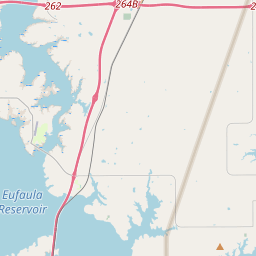First Baptist Church of Mineola







This site has been home to the First Baptist Church of Mineola since the congregation's first frame building was constructed here in 1877. The church's history dates to the early years of Mineola's development, after the town was founded in 1873 at the intersection of the Texas & Pacific and the International & Great Northern railroad lines. The Rev. T. L. Scruggs began holding nondenominational worship services in a log schoolhouse that year, and two years later, the First Baptist Church formally organized out of a group of those early worshipers. The Rev. W. D. Powell led the formal organization of the Baptist church and served as first pastor. The frame sanctuary, built on this site in 1877, was known as Powell's Chapel. Plans for a new brick building began during the pastorate of the Rev. A. D. Aldridge, who served the congregation from 1881 until 1920. The new building was completed after the Rev. W. M. Dailey arrived as pastor in 1920. To accommodate the congregation's expanded programs and ministries, an education building was added in 1950. Continued growth led to the construction of a new auditorium and education building, dedicated in 1957. For more than 100 years, the First Baptist Church has been a part of the religious and cultural heritage of Mineola. It continues to uphold the ideals and traditions of its founders as it provides significant service and leadership to the community. (2001)
As one of the most visible programs of the Texas Historical Commission (THC), historical markers commemorate diverse topics in Texas history, including: the history and architecture of houses, commercial and public buildings, religious congregations, and military sites; events that changed the course of local and state history; and individuals who have made lasting contributions to the state, community organizations, and businesses.
The Johnson Space Center, located in Houston, played a crucial role in the development of the U.S. space program. It was here that NASA trained its astronauts and mission control teams, and it continues to be an important center for space research and exploration today.
In the early 1800s, the region attracted settlers from the United States who were drawn to the lush forests and abundant resources. The first permanent European-American settlement was established in 1846, and it was named Quitman after John A. Quitman, a prominent politician of that time.
During the Civil War, Wood County played a significant role in supporting the Confederacy. Many residents enlisted in the Confederate Army, and the area became a center for military recruitment and training. After the war, the county suffered economically, but with the introduction of the railroad in the late 19th century, the economy began to recover.
Wood County's economy primarily relied on agriculture, with the growth of cotton, corn, and timber industries. The establishment of sawmills and the development of the timber industry brought prosperity to the area. In the early 20th century, the discovery of oil and gas reserves further fueled the county's economic development.
Today, Wood County continues to be an important agricultural and industrial center in Texas. The county's history is evident in its charming small towns, historic sites, and natural beauty. The strong sense of community and appreciation for the region's heritage are still evident today, making Wood County a vibrant and inviting place to visit or live.
Wood County Timeline
This timeline provides a glimpse into the major events and milestones that have shaped the history of Wood County, Texas.
- 1850: Wood County is established by the Texas legislature.
- 1852: The first courthouse in Wood County is built in Quitman.
- 1860: The population of Wood County reaches 4,867.
- 1875: The railroad reaches Wood County, boosting economic growth.
- 1895: The county seat is moved from Quitman to Mineola.
- 1920: The population of Wood County peaks at 19,109.
- 1930: The Great Depression hits Wood County, causing economic hardship.
- 1958: Lake Holbrook is completed, providing a recreational area for residents.
- 1970: Wood County's population decreases to 12,230.
- 1983: Holly Lake Ranch, a gated residential community, is established in Wood County.
- 2000: The population of Wood County surpasses 37,000.
- 2019: Wood County experiences steady growth and continues to be a thriving community.